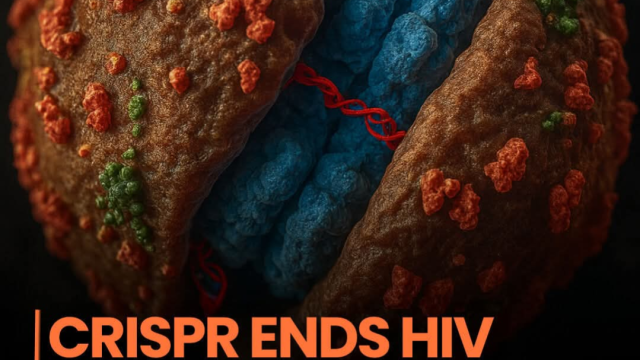A viral post on social media asserts that a CRISPR-based therapy now removes HIV DNA from infected human cells and prevents the virus from returning. The post on Facebook has gathered over 350k likes and over 75k shares
The Claim
“Scientists have achieved a groundbreaking milestone in the fight against HIV by developing a CRISPR-based therapy that removes HIV DNA from infected human cells and prevents the virus from returning. This revolutionary approach targets the viral genetic material directly, effectively erasing HIV from the cell’s genome and halting its ability to replicate”

Fact-check
This claim is misleading. While CRISPR-based research has shown progress in laboratory settings, there is no scientific evidence yet that HIV can be permanently removed from the human body or that the virus will not return.
Researchers have experimented with CRISPR-Cas systems to cut out or inactivate HIV DNA inside human cells grown in laboratories. In early 2024, a team at Amsterdam University Medical Centre reported that CRISPR-Cas9, using two guide RNAs, successfully excised HIV DNA from CD4+ T cells in lab dishes. In those treated cells, the virus did not immediately replicate.
However, the experiment was restricted to cells outside the body and did not address how the therapy might perform in living humans, where the virus is far more complex to eliminate.
One of the most advanced CRISPR-based therapies is EBT-101, developed by Excision BioTherapeutics. It is currently undergoing Phase 1/2 human trials in the United States.
The focus at this stage is safety and tolerability, rather than proving a cure. According to published results, the treatment has been generally safe, with no serious adverse events. But when some trial participants paused their standard antiretroviral therapy (ART), the virus reappeared in all of them.
One participant maintained viral suppression for longer than is typical before viral rebound, but the effect was not permanent.
Medical experts highlight several obstacles that must be overcome before CRISPR could provide a cure for HIV:
Latent reservoirs: HIV hides in inactive cells, forming reservoirs that current CRISPR approaches cannot fully target. Any missed reservoir can allow the virus to resurface.
Delivery mechanisms: Introducing CRISPR safely and effectively into the correct cells across the human body remains a technical hurdle. Viral vectors used for delivery can have unintended effects.
Genetic diversity: HIV mutates rapidly. Variations between strains can make CRISPR guide RNAs less effective, meaning what works in one case may fail in another.
The social media claim that CRISPR now prevents HIV from returning is therefore exaggerated. While science is progressing, no therapy has yet achieved reliable, permanent prevention of viral rebound in humans, nor has any been approved as a cure.
Verdict: Misleading
CRISPR technology has shown real potential in HIV research. Laboratory studies have demonstrated that HIV DNA can be removed from infected cells, and early human trials suggest the approach is safe. However, there is no evidence of a cure.
Claims that HIV has been permanently eradicated from people living with the virus are false. More research, refined delivery systems, and long-term clinical trials are needed before a breakthrough can be declared.






